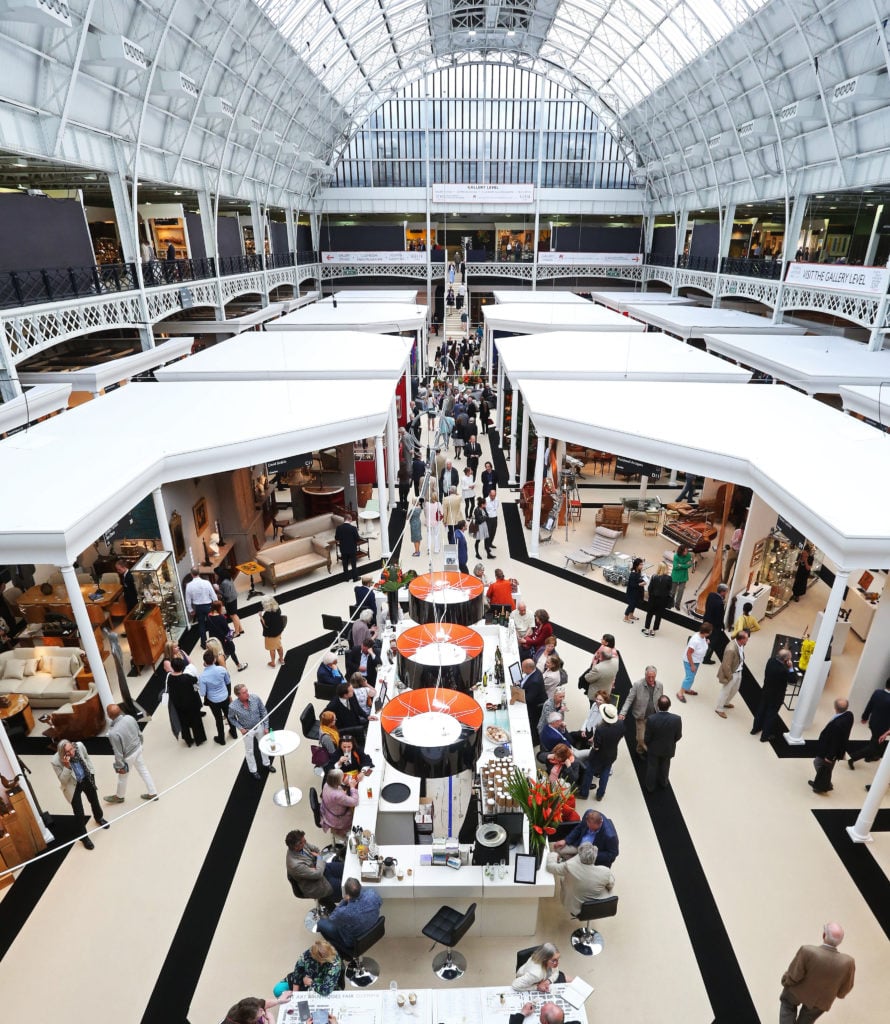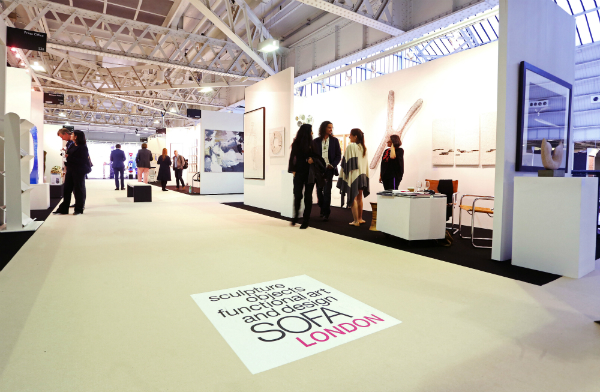Art Fairs
Why Are Antiques Fairs Showcasing Contemporary Art?
An established industry could be at risk.

An established industry could be at risk.

Amah-Rose Abrams

It used to be that a household filled with art and antiques from a particular era was the epitome of great taste and an impressive collection. But that museum-like approach to interior design has fallen out of vogue, making way for a more eclectic and personal angle, and art and antique fairs are having to adapt to it.
In the wake of the news that London’s Art & Antiques Fair, Olympia had introduced a contemporary art and modern design section, called SOFA London, for its latest edition, people are asking if the days of the antique fair as we know it are numbered. But, is this a matter of evolution rather than extinction? Mary Clare Boyd, director at the Art & Antiques Fair, Olympia and the Winter Art & Antiques Fair, Olympia, sees it that way.
“SOFA is widely known in the US for its international dealers selling one-of-a-kind masterpieces and here in London we have an elite selection of dealers who showcased original works from different arts and makers using a variety of mediums,” Boyd told artnet News via email.

Mary Clare Boyd. Photo courtesy of The Art & Antiques Fair, Olympia.
The trend for eclectic collecting and the rise in popularity of mid-century modern design is also a factor. Successful fairs such as Frieze Masters and Masterpiece London have been welcoming exhibitors selling a broad range of items for some time now, so the more traditional fairs could simply be following suit. According to the Guardian, many fairs have stopped using datelines and lifting restrictions on exhibitors showcasing items made in the 21st century.
“Of course all trends affect market trade, but traditional art and antiques remain, and will always remain, hugely popular,” Boyd said. “For example, we recently commissioned some research which found that 72 percent of people believe that antique furniture will always be in fashion while Art Deco was revealed as the nation’s favorite style. It could be perceived that people are going for a more simpler look, but there is still a demand for art and antiques—people are, and forever will, look for quality and unique items, but the beauty is that you can combine the old with the new in your home very successfully and buyers and interior designers are capitalizing on this,” she added.

SOFA London. Photo courtesy Art & Antiques Fair, Olympia.
It is hard to believe that such an established industry could be at risk but, looking at the figures, the overall value of antiques has fallen 45 percent since 2002, according to the Guardian. Boyd believes that, in order to adapt, dealers need to focus on quality and provenance.
“Some specialist items have increased, so there is a mixed market,” Boyd told artnet News. “Pieces that are one of a kind with an unbeatable provenance will continue to soar due to their rarity, and demand for such pieces will always be high from collectors and individuals. Obviously, there are pieces that have reduced [in value], which has also made the market more affordable and has introduced new buyers to the scene.”
Mid-century and Scandinavian furniture is very fashionable and is also available as brand-new items, via re-issues through UK high street retailers like John Lewis and Heal’s. But when it comes to antiques, fairs still play an important role.
“As more dealers are trading by appointment, fairs have become ever more important because that’s where buyers can see a full range of stock on offer so they need to capitalize on these as much as possible,” Boyd emphasized. “Networking, meeting potential buyers and collectors face-to-face, and keeping on top of the trade is key to success.”
The increasing number of antiques fairs bringing in modern and contemporary art pieces speaks volumes, but whether this is a mere trend or a cultural shift is yet to be seen.